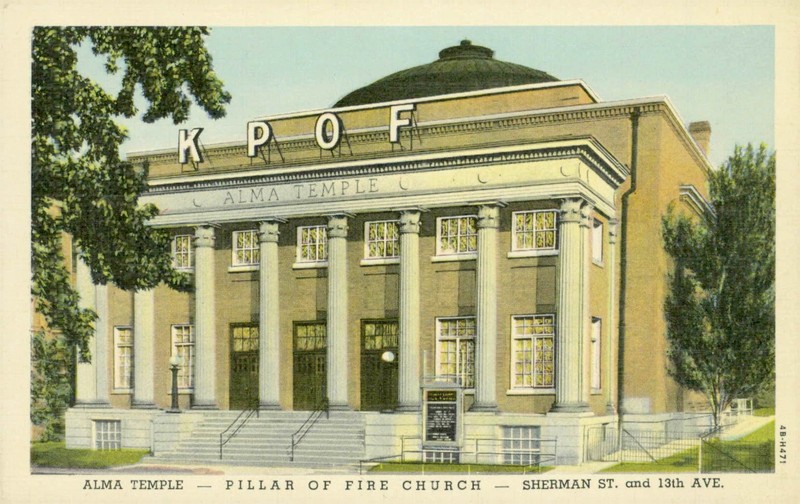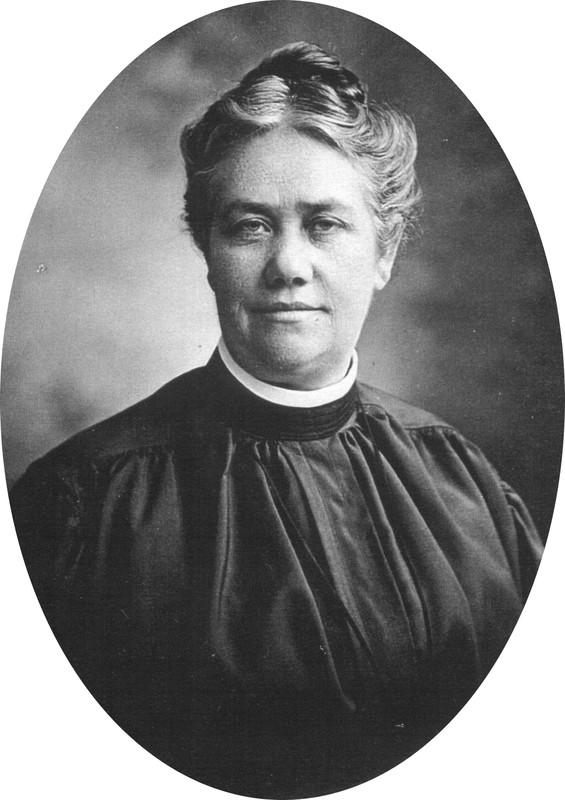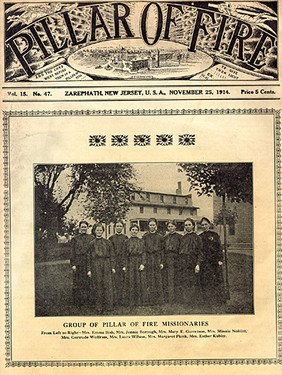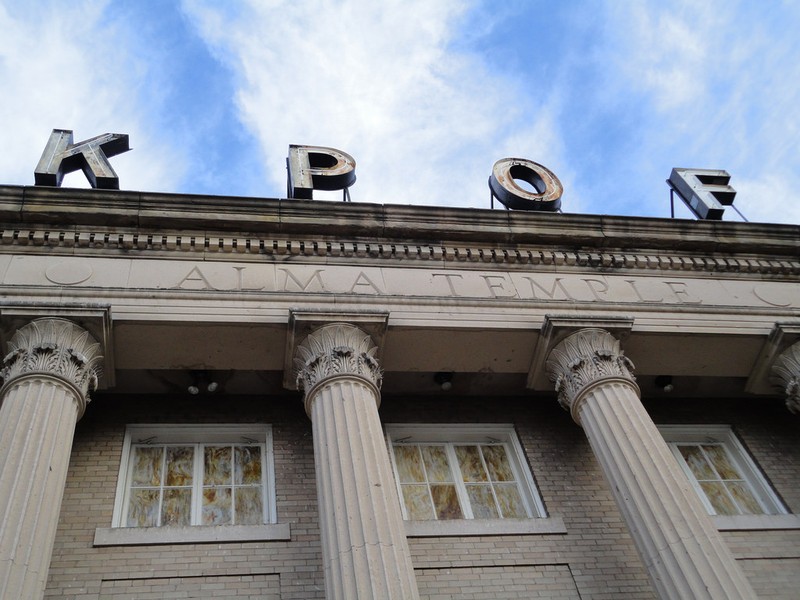KPOF Hall (Alma Temple of the Pillar of Fire Church)
Introduction
Text-to-speech Audio
Images
Vintage postcard depicting the Alma Temple/KPOF Hall, at 1340 Sherman Street, Denver, Colorado

Alma White around the time she founded The Pillar of Fire.

Alma White preaching in old age.

Pillar of Fire publication from 1914 depicting a group of female missionaries.

Cartoon illustrating The Ku Klux Klan in Prophecy, published by the Pillar of Fire in 1925.

Neon call letters of the KPOF sign atop the Neoclassical facade of the Alma Temple. Photo by Paul Sableman. Licensed under Creative Commons.

Backstory and Context
Text-to-speech Audio
Alma Bridwell White was born in Kentucky in 1862 and converted to Methodism at a schoolhouse revival meeting while still in her teens. She followed relatives west to what was then the Montana Territory, teaching school there and in Utah. She became deeply involved in the Holiness Movement, an offshoot of Methodism emphasizing the personal experience of “sanctification”. As a new religious movement, the Holiness Movement offered greater opportunities for women than established churches and featured a woman, Phoebe Palmer, among its founding thinkers.
White married Methodist revivalist Kent White in 1887, and began leading her own revivalist meetings in 1893. In 1901, in Denver, they founded what was then called the Methodist Pentecostal Union (the name was later changed to distinguish the church from Pentecostal denominations). In 1909, they separated and White continued to build a national and international role for her church, preaching and evangelizing in New York and even London. White was consecrated as a bishop by a Methodist evangelist in 1918, making her the first woman to use that title in the United States, In 1919 her movement was officially renamed The Pillar of Fire, a reference to the Biblical story of Moses. The church’s official headquarters was at its self-sustaining community of Zarephath, in New Jersey, but it maintained a strong presence in Denver.
White believed in equality of opportunity – for white Protestant women. She bitterly attacked the Catholic church, also speaking poorly of Jews and non-whites. Her years of greatest prominence coincided with the years in which the second Ku Klux Klan, founded in 1915, made itself into a political force – in Colorado and elsewhere -- by exploiting nativist, anti-immigrant, and anti-Catholic sentiments. During the 1920s, White spoke favorably of the Klan and apparently allowed Klan events on church properties. The church has since disavowed these links.
Construction of the Alma Temple on Sherman Street was overseen by John H. Kubitz, a former mining engineer who had been converted by White at a revival meeting in Butte, Montana. The work was largely carried out by volunteers, and materials were purchased through donations. Construction began in 1923 but was not completed until 1937, when its grand opening was attended by Denver Mayor Benjamin Speer and White herself. The Greek Revival building was designed by the Denver firm of Marean & Norton, also responsible for the Greek Revival structures in the nearby Civic Center. The temple’s modern frame of steel and reinforced concrete is clad in pale Turkey Creek sandstone quarried near Pueblo.
Today, Alma Temple still functions as a church. As a performance space, the temple was home for many years to the community-based Denver Philharmonic Orchestra (http://denverphilharmonic.org/; not be confused with the Colorado Symphony Orchestra – http://www.coloradosymphony.org/). KPOF AM, now called AM91: The Point of Faith, continues to broadcast from the historic “Westminster Castle”, purchased by the church in 1920 and located in Denver’s northwestern suburbs.
